There’s a good chance you’ve heard of agile marketing.
It’s a trending topic that’s picking up steam as marketing teams look for ways to produce better work more quickly in response to rapidly changing markets.
But, odds are you might not know exactly what the term means.
You might not even be sure if you’re implementing it right now or not.
However, those who are using it intentionally right now report being 252% more likely to be successful.
And with this brief guide, you can get started seeing those benefits right now.
What follows isn’t a by-the-book agile approach. But, it does lay out an easy-to-follow adaptation that will get you organized and on track to succeed.
Why should marketers care about agile content marketing?
In short, because it works to help teams work better. Remember the statistic that agile marketing teams are 252% more likely to report being successful? That’s certainly not an insignificant number.
Not everyone is enjoying those benefits (yet), though.
A quarter of all respondents in that same survey were not using agile at all. An additional 37% couldn’t tell you if they were agile or not.
This tells us a couple of things:
- Marketers are confused about agile as a concept. And some understand it differently (either as lower-case agile in reference to being nimble, or upper-case A in reference to following Agile principles by the book).
- But, there are benefits for those who act now. The data shows agile marketers consider their work more successful. Why not get on board now, while you can get the greatest competitive edge?
Improving your processes from the bottom up is one of the best ways to make everything else your marketing team does better.
Okay, so what exactly is agile content marketing?
Let’s start with understanding two basic concepts: agile and scrum.

To keep it brief, agile is a project management methodology for producing higher quality work in less time. It achieves this by streamlining workflows, organizing processes, and facilitating more effective collaboration.
Scrum is the actual framework used to implement agile processes within a team. Here’s a fast visual overview illustrating how it works:
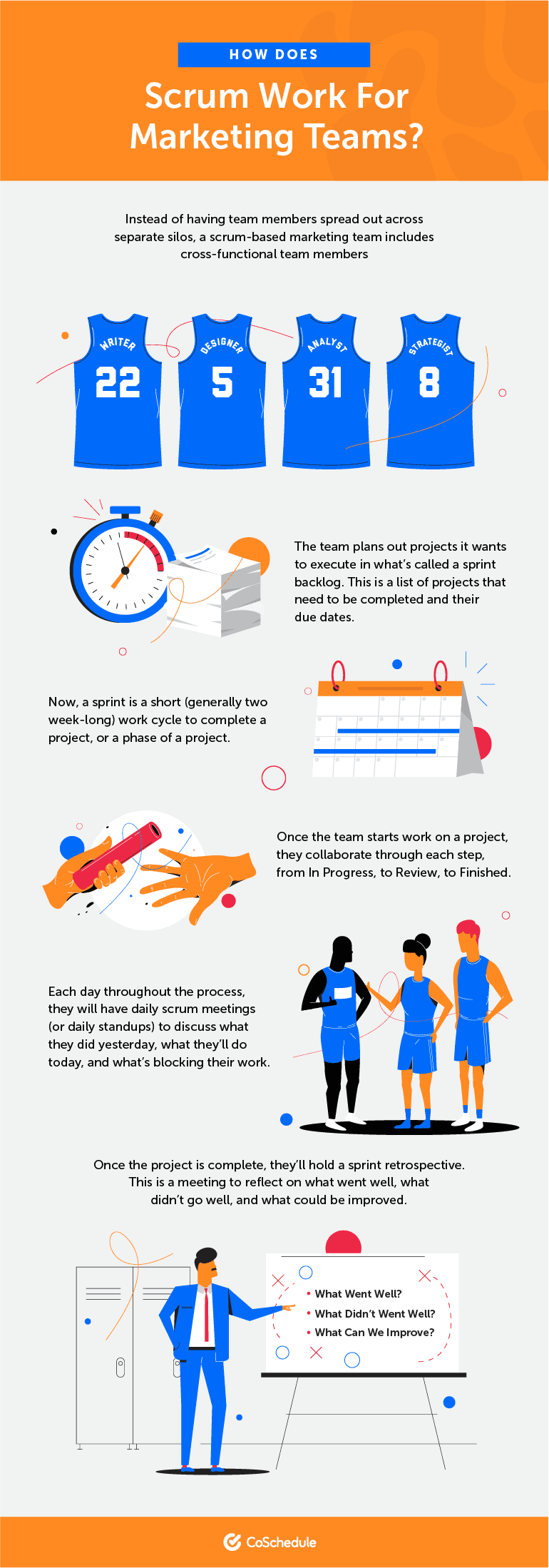
Getting the team together
Cross-functional teams are at the core of the agile approach.
These are teams that include members from different disciplines (writing, design, analytics, development, etc.) that will work together as a unit.
This keeps the team working together more closely than a project starting with one team, then being handed off to the next, and so on down the line until it’s completed.
In corporate speak, this might be called “breaking down silos.” That’s an accurate description, but what you’re really doing is removing barriers between people.
While constructing cross-functional teams can be a deep and involved process, the easiest way to get started is to bring everyone together into one project management tool and have them involved in collaborating on projects together from the very beginning.
Determining who needs to be on the team may vary depending on the needs of the project (meaning you don’t necessarily need to move people onto new teams on a permanent basis).
Plan your work in sprints
In agile, work starts with a sprint planning meeting. The goal of this meeting is to plan all the tasks, projects, and campaigns the team will tackle in the future.
Those ideas are then planned out into sprints, which is a two to four-week timeframe within which a project (or phase of a project) will be completed. This gives your work clear parameters for when things need to be done and deadlines that need to be abided by.
The document they’re planned in is called your sprint backlog, which is used to visualize future project and campaign ideas your team will complete.
That’s how it all works at a high level.
Now, with content marketing, you might have projects that don’t necessarily need to be planned this in-depth (for example, writing a blog post in most cases will take significantly less than two weeks).
But, for larger projects in your strategy (like ebooks, research reports, multi-channel campaigns, and so forth), this process can work extremely effectively. Here’s a more detailed step-by-step breakdown of this process:
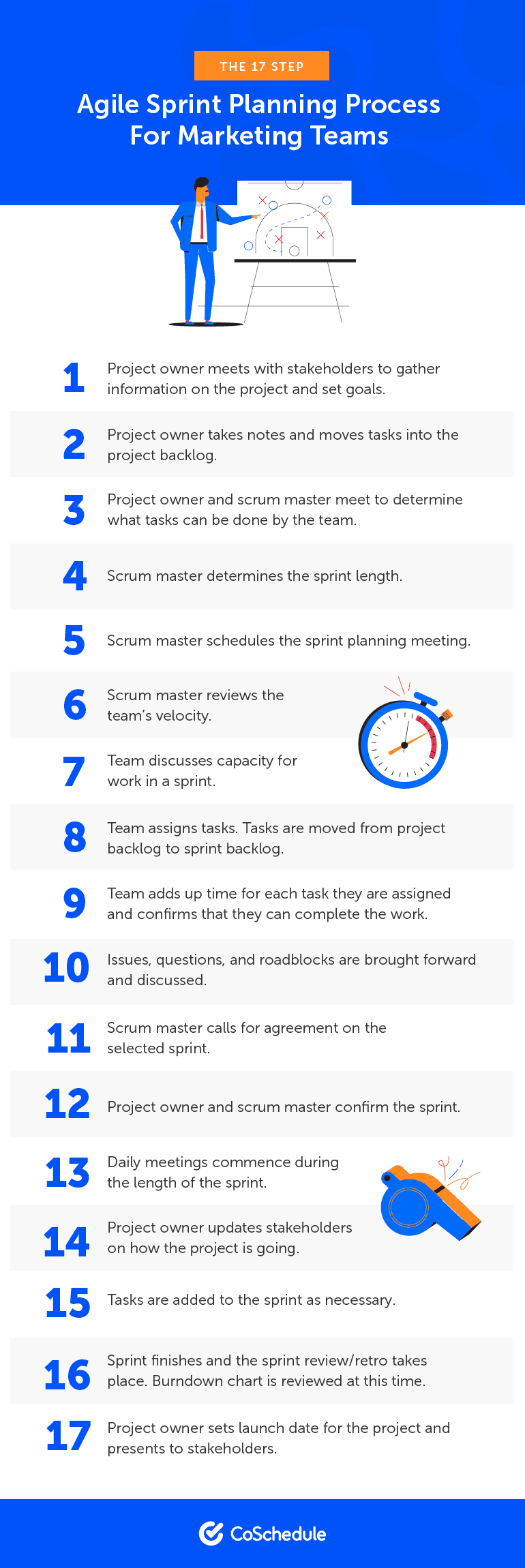
An easy way to build a sprint backlog is to create a spreadsheet that looks something like this:
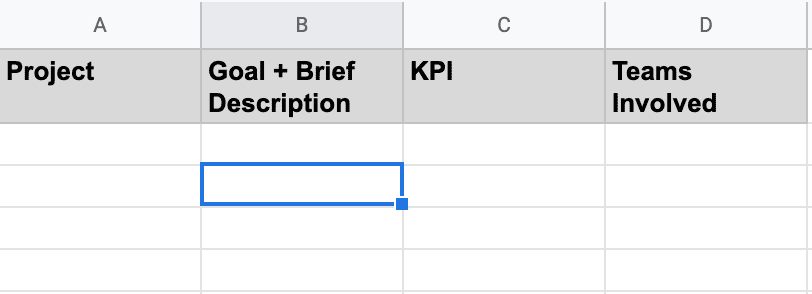
How you build this is less important than making sure it’s kept somewhere easily accessible for your team (Google Sheets, Excel Online, or any other cloud-based platform should work great).
That’s all that’s essential if you want to keep things simple (and keeping things simple, at least at first, is advisable).
Running easy sprint planning meetings
Once you have a general idea of what your project will be, gather the team together for a sprint planning meeting.
At CoSchedule, these are called team huddle meetings—the terminology matters less than the intent and the outcome. What follows is a slight variation on traditional sprint planning.
The goal of this meeting is to determine the following things about the project:
- Project summary: A working title or basic description is sufficient.
- What work needs to be completed? Discuss with the team what steps they’d need to take to execute their portion of the project.
- How much effort will it take? One way to approach this is to “T-shirt size your projects” (meaning labeling tasks as S, M, L, or XL, relative to how long each will take).
- How much time will each task take? If you’re already estimating time for projects, this will be easy. If not, MindTools has a great guide to get you started.
Keep everything from this meeting documented by creating a slide that looks something like this:
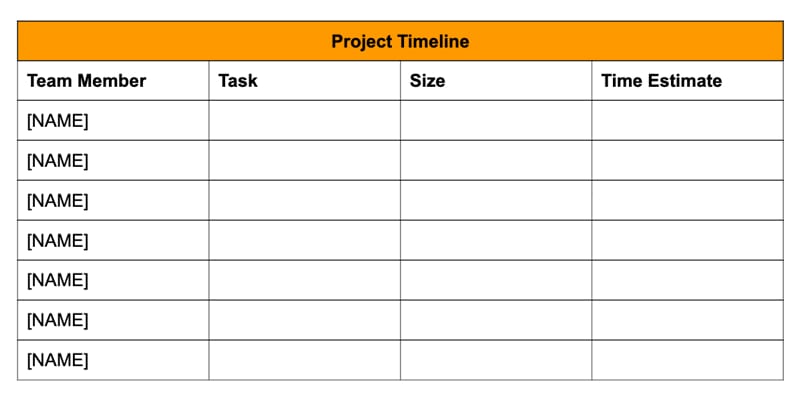
And if you want to make this extra easy, copy the Google Slides template here to put together a quick project agenda deck (in order to use the template, you’ll need to click File, then click Make a Copy, or download a copy).
Visualizing sprints and projects on a marketing calendar
Mapping all your projects on a content marketing calendar is a smart idea.
They make it easy for everyone on the team to see when things are due and which work is coming up next.
Apps and software-based solutions work best for creating calendars. If you aren’t ready to jump into a paid solution just yet, though, you can build one with a spreadsheet.
To make this simple, you can borrow this Google Sheets content calendar template (either download a copy or click File > Make a Copy to create an editable version).
Once you open the template, you’ll see a master tab for mapping out content:

For each month, you’ll create a list of projects with the following information:
- Content Type: Blog post, video, ebook, etc.
- Publish Date: When you expect the content to be published.
- Team Member: Who owns each piece?
Then, at the bottom, you’ll see tabs for each month throughout the year:

Within each of these tabs, you’ll find social media promotion calendars for distributing that content (feel free to edit columns and rows to match your chosen channels and tactics):
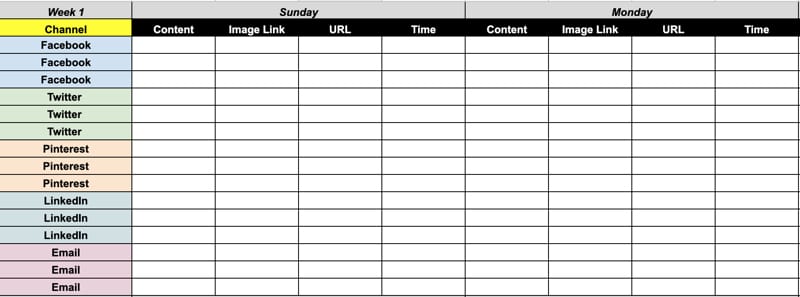
Would everyone please stand up …
As you work through your sprints, host standup meetings each day.
These are short meetings that should take 15 minutes or less where the team shares what they worked on yesterday, what they’ll work on today, and what’s stopping from making progress.

To run these meetings the right way, get everyone together in the same room.
Then, have everyone take turns answering those three questions. Everyone should be standing up too (since these meetings are meant to be quick, there’s no need to get too comfortable).
It’s advisable to have your scrum master document what each team member shares. Consider creating a spreadsheet that looks something like this:

If the team has further action items to discuss, they should do so immediately afterward to get roadblocks resolved and keep the project moving forward. This way, you can keep your meetings brief, while keeping everyone productively in the loop.
Going retro
Once the sprint is over, hold a retrospective meeting. These are 30-minute meetings to talk about what went well, what didn’t, and what you intend to do to improve in the future.
To make these meetings useful, it’s important to act on the team’s thoughts and feedback.
Otherwise, all that discussion is going to disappear into the ether once everyone leaves the room, and your time will have effectively been wasted.
Assign someone to take notes (using a note-taking app like Evernote or something else that can be shared with the team). If you have a conference with a TV, share those notes on-screen where everyone can see them.
Next time you plan a sprint, review your retro notes and be disciplined in applying suggestions for improvement. In this way, feedback from your own team can be recycled into a renewable force for continued improvement.
It’s all about iterating on data
Ultimately, that’s what makes agile work to make marketing better.
Sure, it takes effort and dedication to make it work. Fortunately, even starting with small changes can make a big difference.
And the payoff if you stick with it? Making your team 252% more likely to succeed.
Here’s to bettering your marketing, one small (agile) step at a time.




